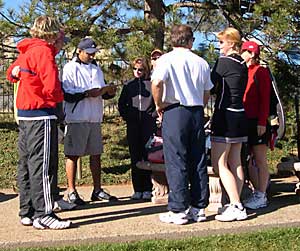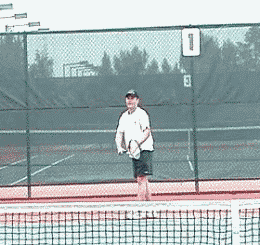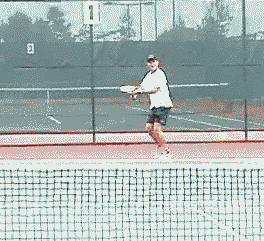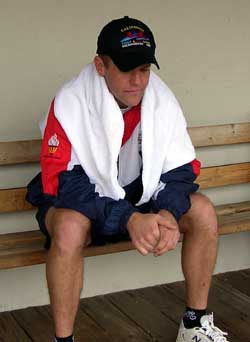|
TennisOne Lessons
Fixing The Broken World of Recreational Tournaments By Joel Drucker
The depravity of tournament tennis struck me the day I saw a tennis player's girlfriend bring him a bag of Jack-in-the-Box french fries. Such is the cuisine of the NTRP player out on the 2.5-5.5 circuit. But then, just as the competitor was about to dip into his oily non-snack of champions, the tournament director announced it was time for him to play his match. With that, the potatoes were stuffed into the player's bag. As he walked on to the court for his match, three scenarios emerged: Eat them during the match. Savor the cold tubers as the reward of victory. Eat them in misery on the drive home following a defeat. I never found out what happened, because I had already lost in the first round and was about to head home myself. Not only do I regret having driven 45 minutes to and from one dreary venue to play one match, but I also wish I knew what became of his french fries.
The point of this is an opening salvo in a big problem I have with the very structure of tennis tournaments. Those who run tennis wonder why the sport struggles to grow. Certainly there are some nice programs afoot that are getting people acquainted with tennis, such as the USTA's tennis welcome centers and other such entry-level efforts. But once in the church, how do you get people to keep coming? Well, the current tournament milieu is hardly inviting. Here is what I believe is the main reason: no guaranteed quantity of tennis. Add to that long drives, indeterminate waiting times, cruddy venues - to say nothing of jerky opponents who cheat and yell - and the overall experience is massively lacking.
As Billie Jean King pointed out to me years ago in a discussion of World Team Tennis, "In tournaments, half the people who enter are gone in the first round." So imagine: You've scheduled no other tennis for the weekend. You've blotted out aspects of your personal life too. You've driven 30-60 minutes to play a match at 8 a.m. on Saturday. You arrive at 7:45 . Is the opponent even there? You wait to get on - and again, if you lose, by 9:30 you're on the road again, the bulk of your weekend includes no scheduled tennis or personal activities. Of course, if you win, you now face a few hours in some suburban town, killing time. Keep winning, and you might get to come back the next weekend. Add to this wacky weather and who knows how much tennis you'll end up playing? So what is my solution? First, all tournaments must take place over two weekend days. Second, conduct singles and doubles tournaments on different dates so that there's not excessive clutter.
Then, rather than merely play matches one after another, I propose all players arrive at 9 a.m. for a brief 20-30-minute workout. This way, every one can get acclimated to the courts and also get warmed up on the venue (the body can get pretty rusty while driving). Once all hands are on deck (and avoiding issues related to defaults), it's time to build a tournament draw - a singles round-robin that guarantees everyone at least two matches on day one, and probably two on day two. In this format, it's probably best to play a 10-point tiebreak in lieu of a third set - but so what if you've got at least two matches on your docket. If you want to add another fun element to it, organize groups of players on to teams so that they can build a rooting interest in one another. I know that in some ways this is stealing from league tennis, but I also think league tennis' strong emphasis on doubles is a turn-off for gung-ho singles players.
So if you had a singles tournament with, say, 12 4.0 players on one team and 12 on another, engaged in round-robin play all day long, the tournament would become far more communal and engaging for all. The same approach could be applied to doubles-only tournaments. Again, this vision calls for keeping singles and doubles apart. There's only so much time, so let's put the cards on the table and give people a format where they can get maximum tennis. Now I know all those hard-working tournament directors who've worked for peanuts to run these events will throw up their hands at this idea. They'll say it's impossible, that scheduling and economics and other factors get in the way. But here's a reality: Recreational tournaments are dying. For what they deliver, it takes far too much displacement of one's life to enjoy them. Tennis should support lifestyles, rather than make lifestyles support. Get those french fries out of the bag! Better yet, if we know we'll be at the venue all day, we can bring better food. Your thoughts? Your comments are welcome. Let us know what you think about Joel Drucker's article by emailing us here at TennisOne . |





